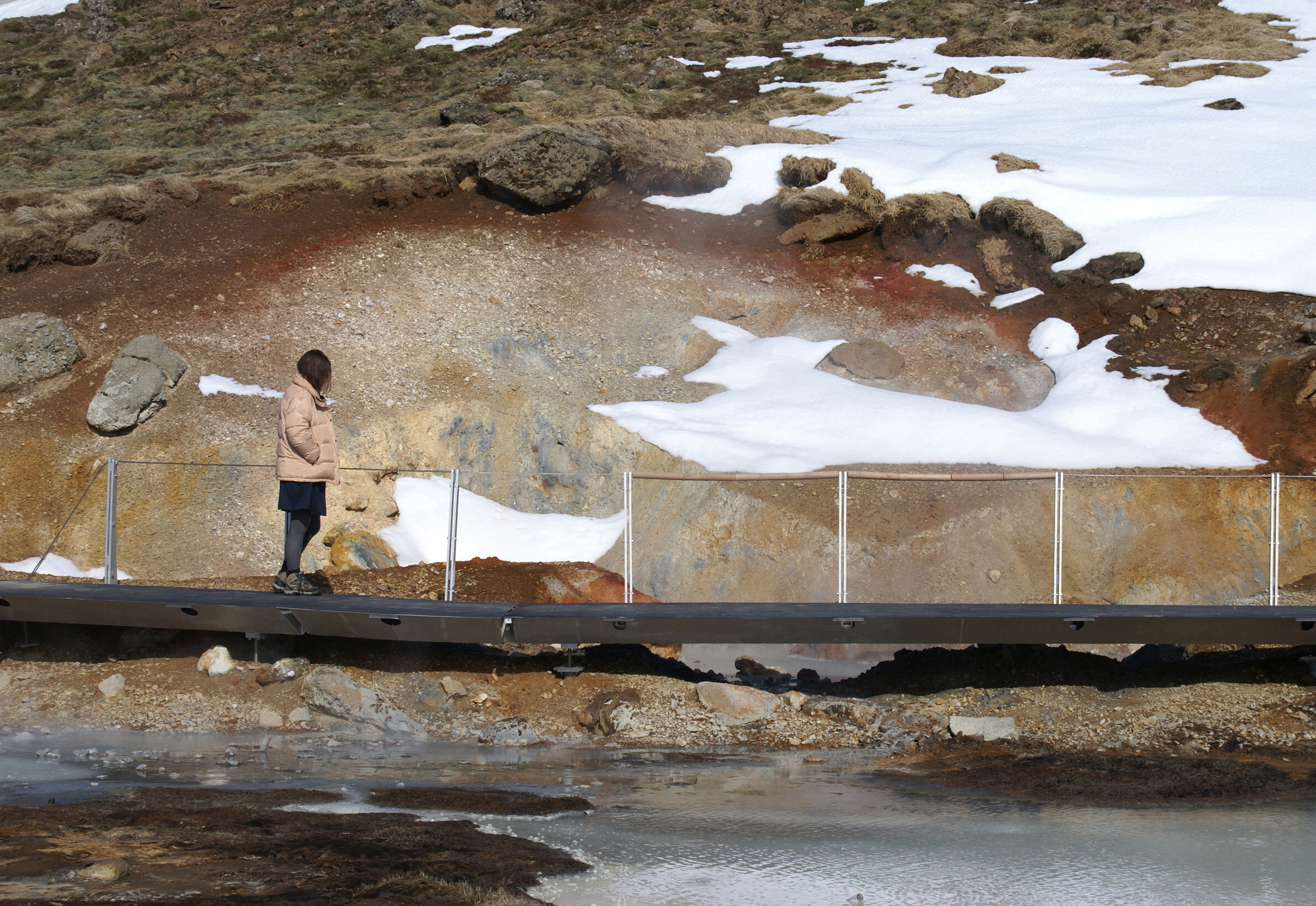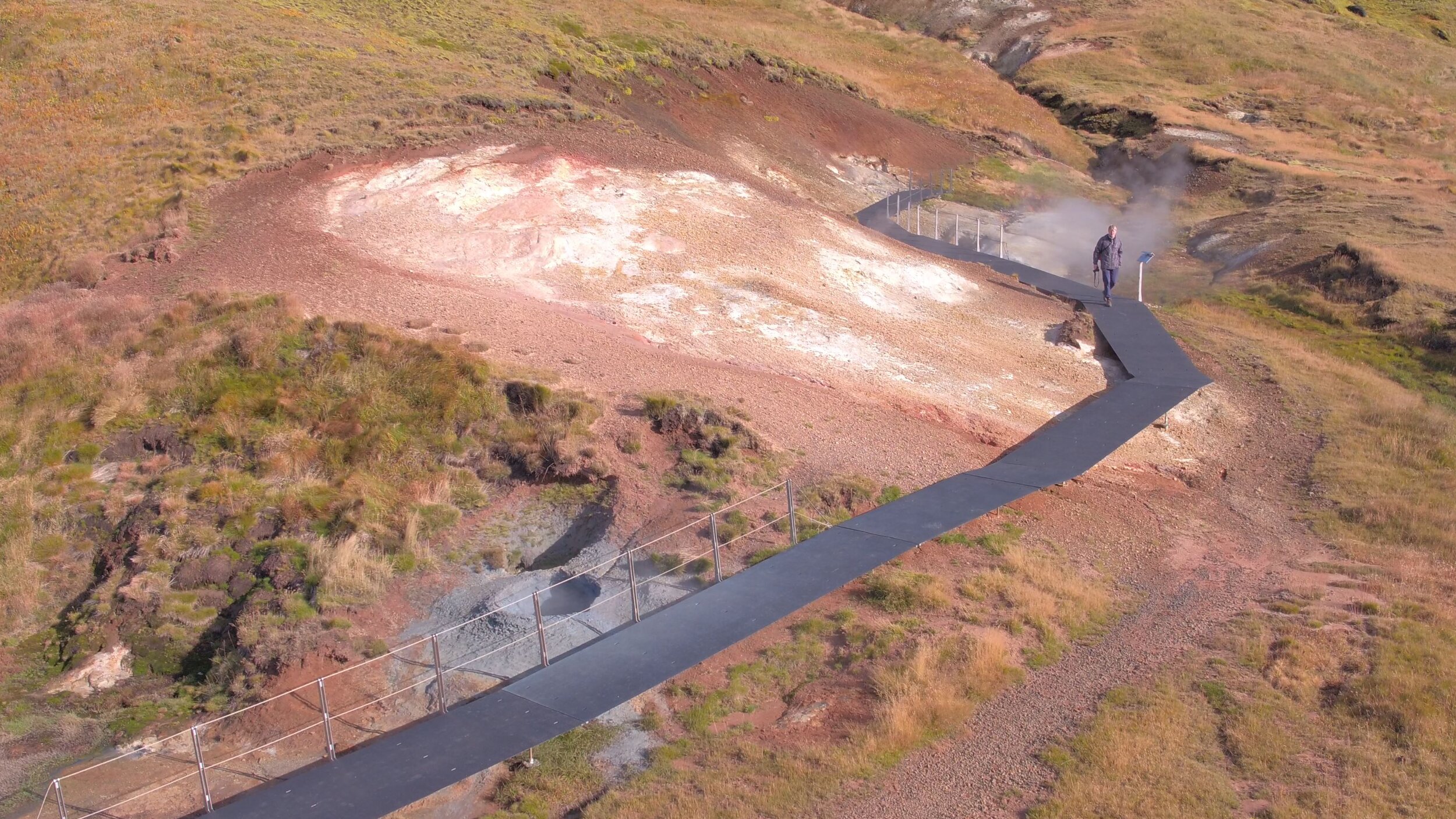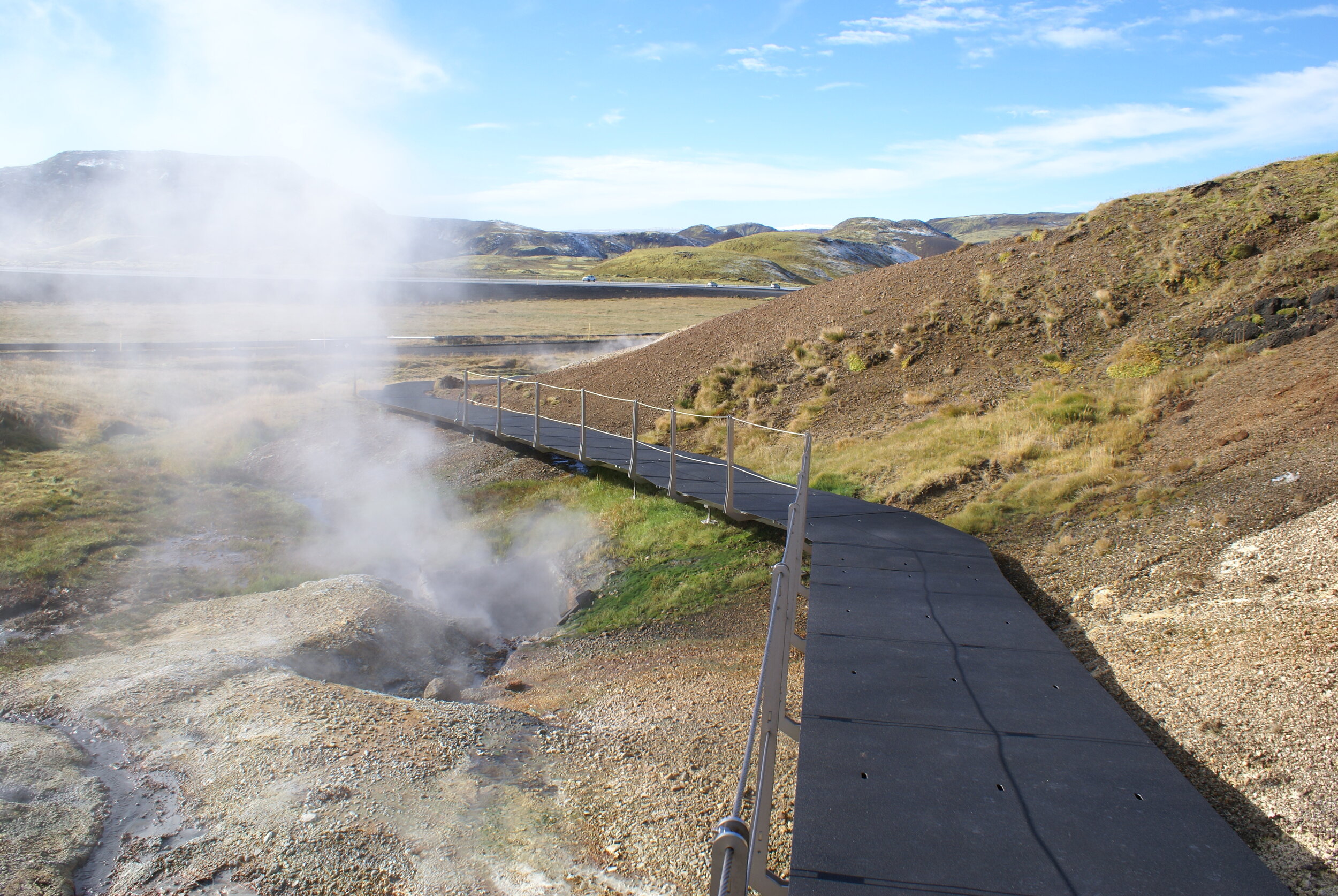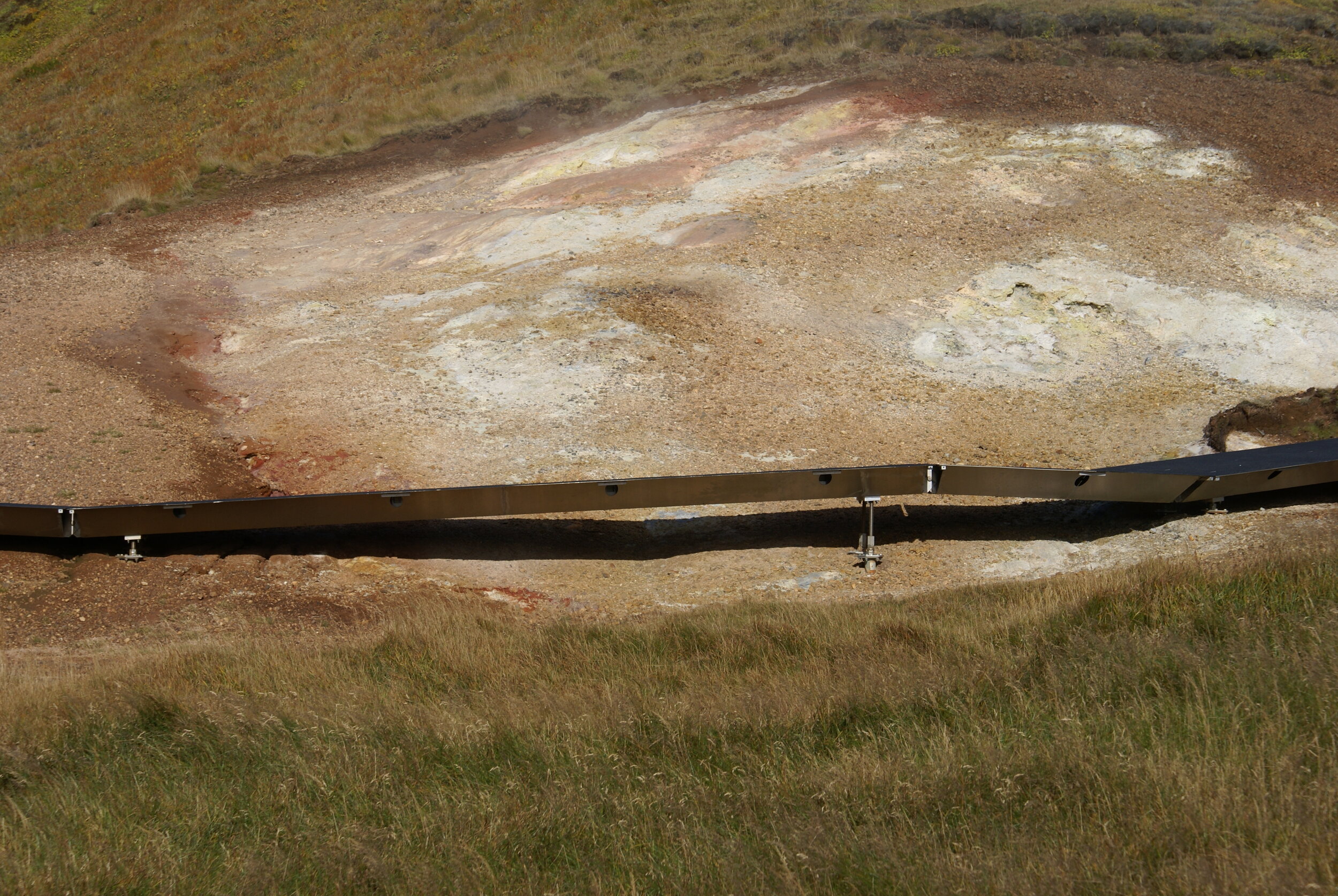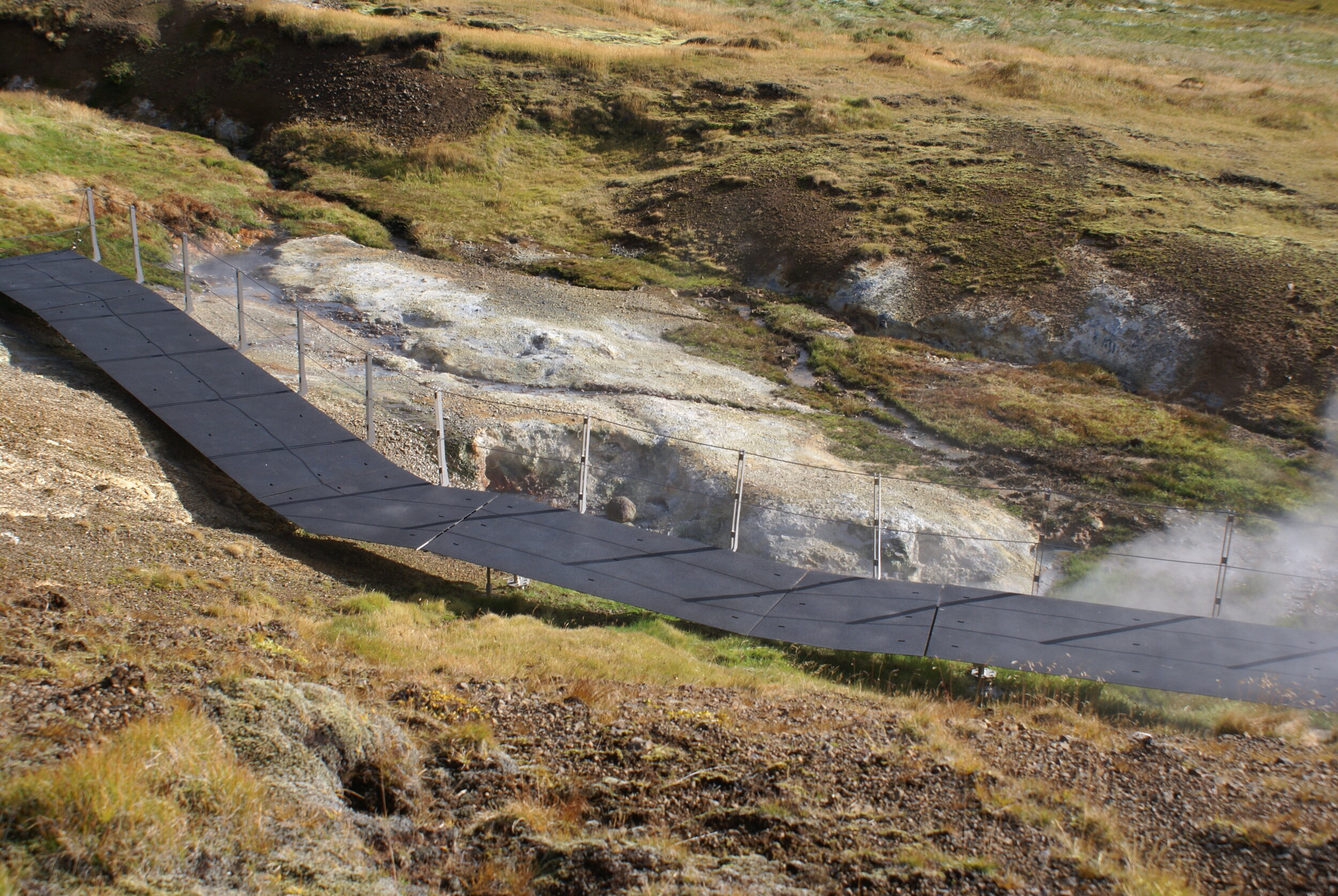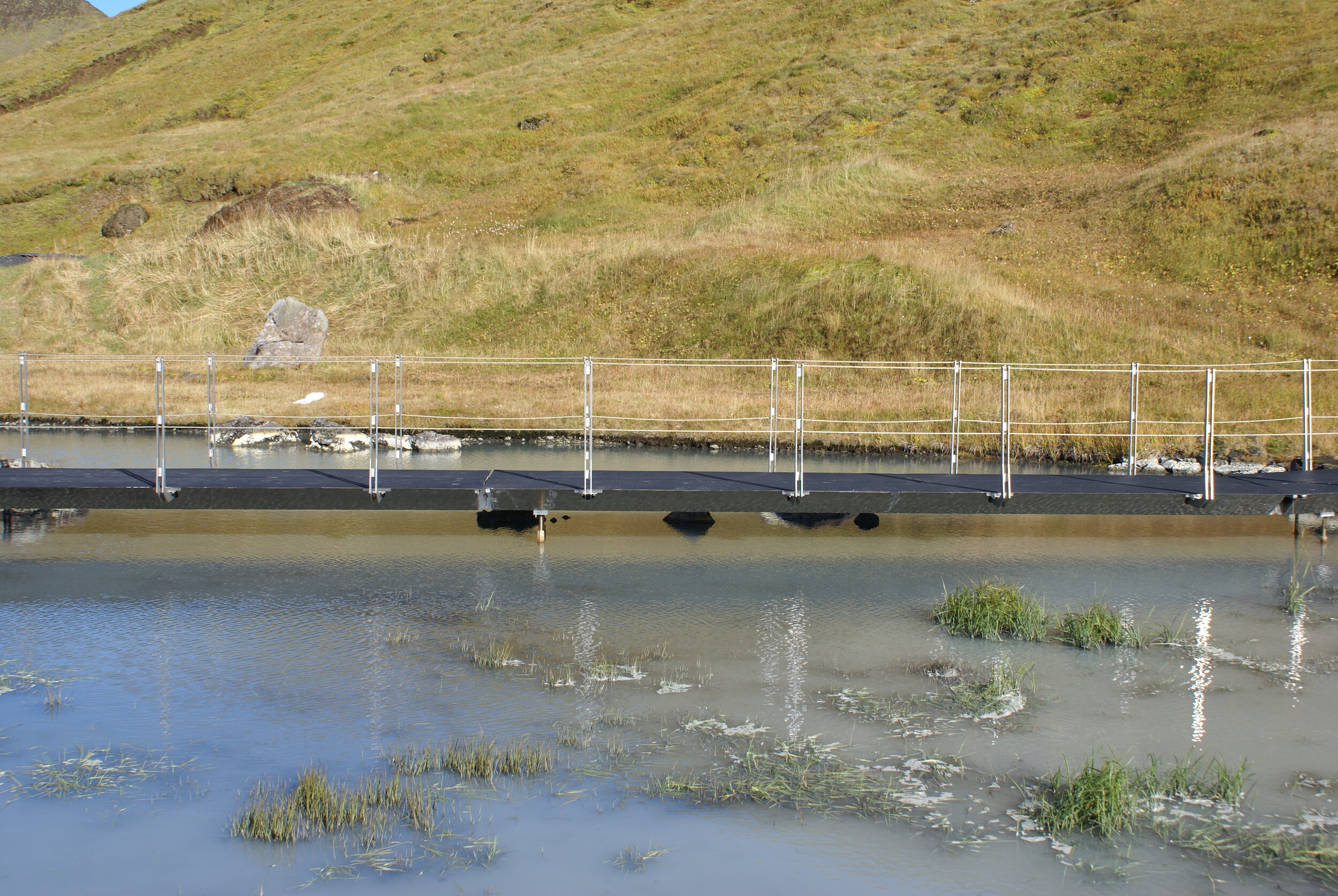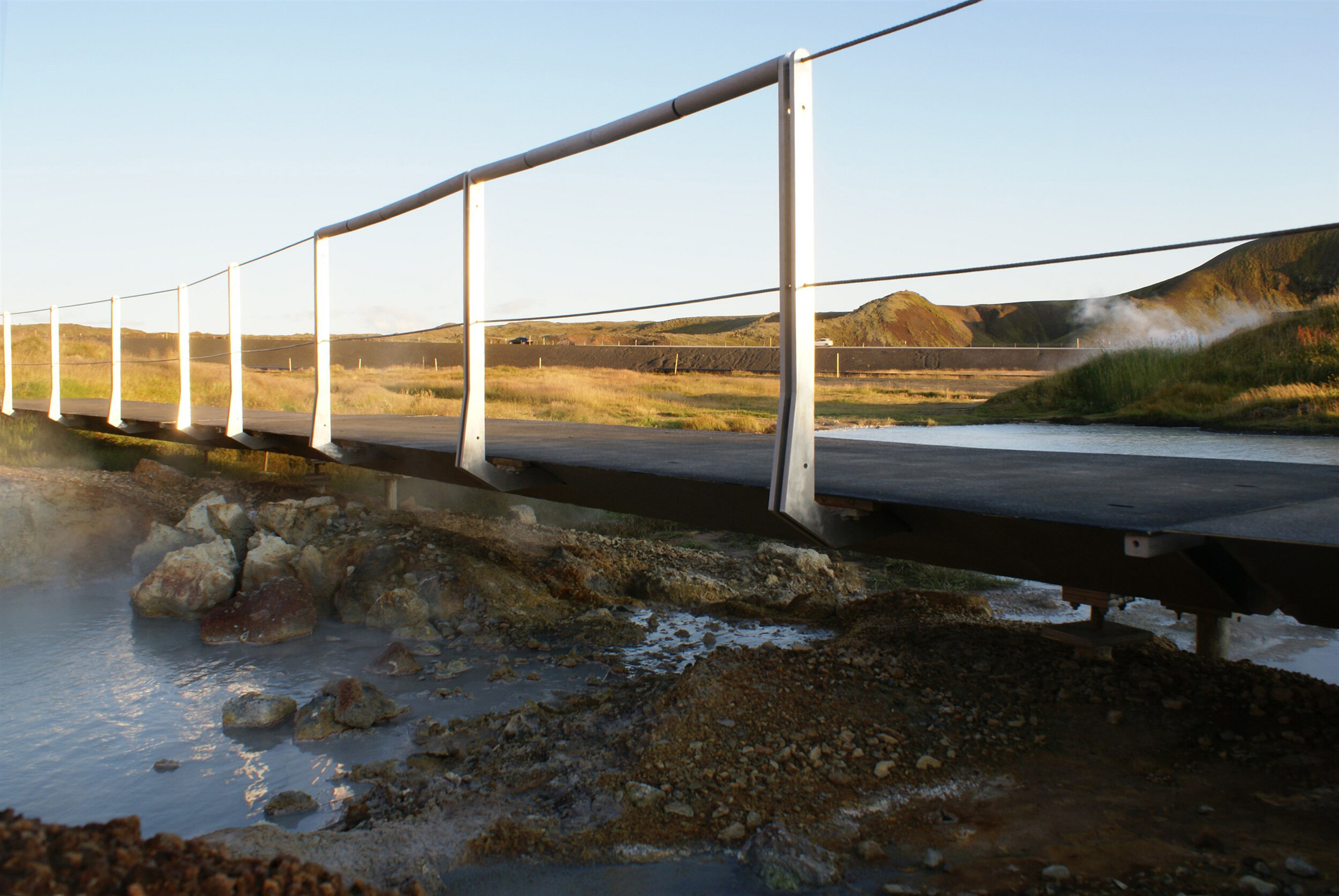A Sustainable System
The Hovering Trails is the only multi-awarded design that offers a truly sustainable system to visit a fragile site.
Its completely reversible process allows it to be installed or removed without any damage to the site’s ecosystem.
Designed, made, prototyped and tested in Iceland it has a remarkable carbon footprint, aluminum also beeing 100% recyclable.
Created for a maximal protection of nature, it has the lowest intervention possible on the surrounding land.
Hovering on the boiling ground of geothermal areas, the trail roams over lands without disturbing the water flow and thus offers the perfect wetland protection.
#1 COMPLETELY REVERSIBLE PROCESS
The installation of hovering trails is completely reversible. It means that there will be no damages to nature where the paths that have been previously laid down are removed. On the pictures below you can see the process from the installation of a hovering trail until it was taken one year later. As the pictures show, no traces of the trail can be seen after the removal.
A - 2018 : An Area outside the gravel path is squashed by visitors’ steps
B - 2019 : The Hovering Trail is installed and makes the access to the site easier
C - 2020 : The Hovering Trails are installed further, the path is removed to add a viewing platform
D - 2020 : After the removal, the nature is untouched and continues to develop
E - 2023 : Nature is thriving and the site even more enjoyable
#2 Small CARBON FOOTPRINT
The carbon footprint of the product is small, because it is all made and assembled in Iceland. The aluminium panels, adapters, signs and railings are laser cutted and welded together and protective covering with anti-slip protection is applied on the paths. No machinery is needed for the installation, which is very easily done. Maintenance is minimal, while durability is at a maximum. All parts are reusable and the aluminium is recyclable.
#3 LowEST Intervention
With its 6 meters carrying capacity between the mountings andt its trapezoidal forms, the trail has a minimal intervention level. The visible outer edge is only 4 mm and the middle part, which is the highest one, is only 20 cm. The light and neat architecture makes it inconspicuous in the natural environment and easy to adapt to the landscape. You can get very near phenomenal sites and have an unique experience. No mechanical disturbances of the ground is needed.
#4 WETLAND PROTECTION
Nowhere does the trails interfere with water flow. The water freely runs down the slopes and on the flatland. Moorland, streams and lagoons remain undisturbed. The trails do not affect the water flow during rain or in swelling of rivers. The vegetation grows in peace while the guests are protected from wetness and dangers.







